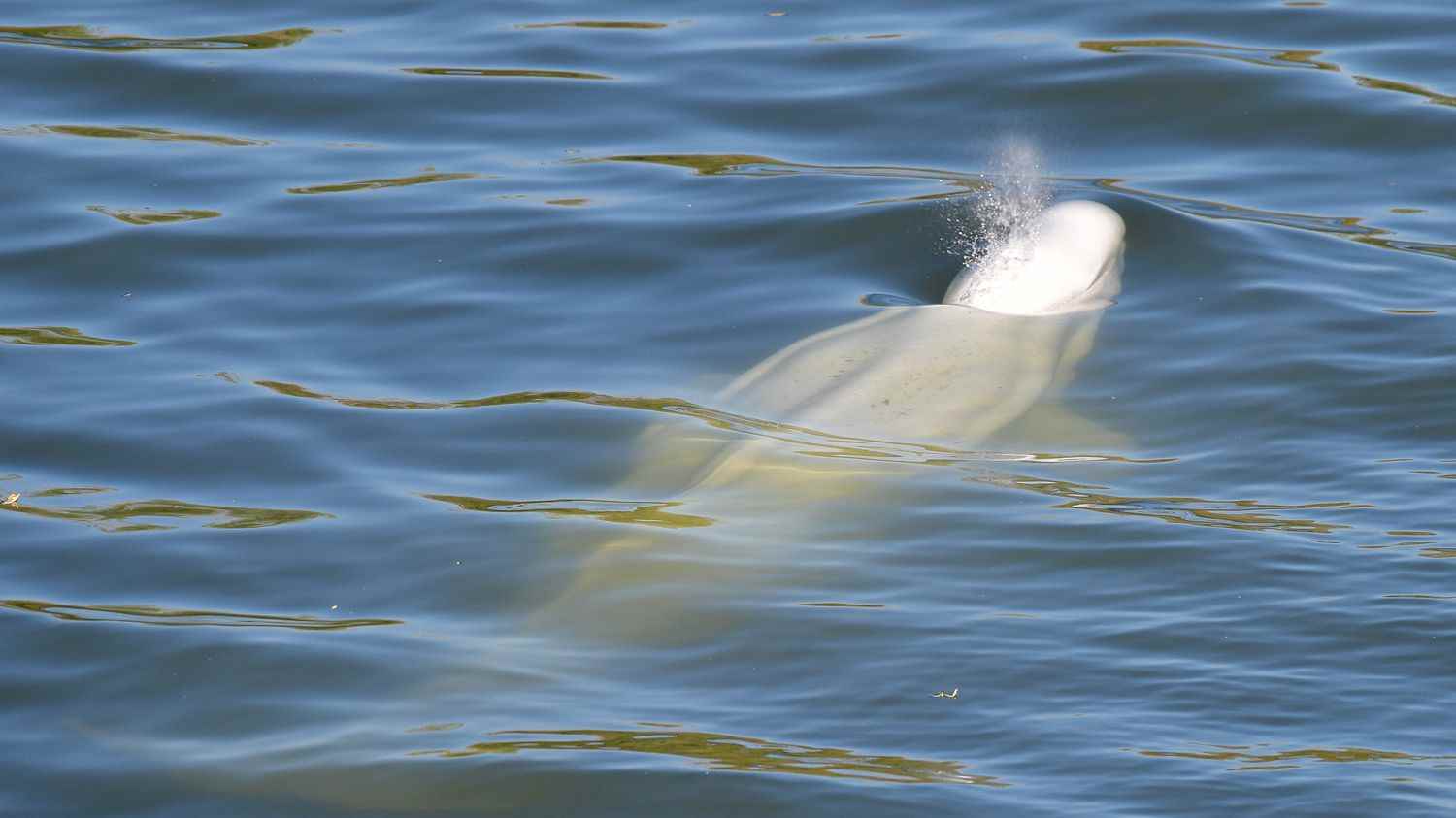The beluga, spotted in the Seine on Tuesday, entered a lock 70 km from Paris on Friday August 5. This situation represents a “risk of additional stress” for this cetacean, explains the president of the NGO Sea Shepherd, Lamya Essemlali. The lock of Notre-Dame de la Garenne, near Vernon, is now closed and prohibited to navigation until further notice, according to the prefecture of Eure.
Lamya Essemlali lamented that “Attempts to feed in the river have so far not interested the beluga” but that there remains a hope that “it’s different in the lock”. If the cetacean “do not react positively, it will become complicated”, she continued, citing veterinarians specializing in this protected species, which usually lives in cold waters. “We have to act quickly, his state of thinness being very advanced, and getting him out of the water to provide him with treatment promises to be very difficult.”
Beluga in the Seine: we have started the feeding attempt. For the moment, the beluga is not interested in the fish offered to it. We remain hopeful that he agrees to feed. pic.twitter.com/nhYp0ytwN8
— Sea Shepherd France (@SeaShepherdFran) August 5, 2022
Gérard Mauger, vice-president of the Cotentin Cetacean Study Group (GEEC) continued to observe the beluga. “It has the same behavior as yesterday, very fleeting. It makes very short appearances on the surface, followed by long apneas.” Approaching about fifty meters, “we made acoustic recordings, with our engines cut, but he did not make sound emissions”he regretted.
Four boats were in the area, according to Gérard Mauger: that of the Sdis (Departmental Fire and Rescue Service), the OFB (French Office for Biodiversity), Sea Shepherd and the SNSM (National Society for Sea Rescue). ).
According to the Pelagis observatory, which specializes in marine mammals, this is the second beluga known in France after a fisherman from the Loire estuary had brought one up in his nets in 1948. In 1966, another individual had traveled up the Rhine to Germany and in 2018, a beluga was observed in the Thames estuary in England.
“These cases of wandering remain unusual and unexplained, with likely multiple reasons including health status, age (subadults disperse more easily), social isolation, environmental conditions, etc.”continues the observatory.
